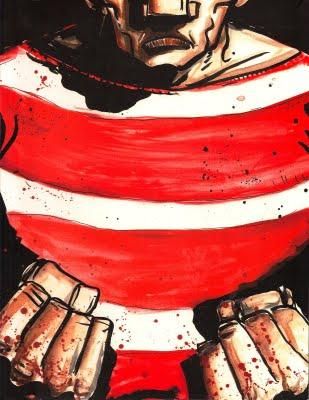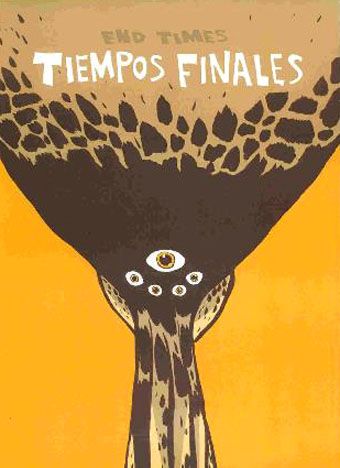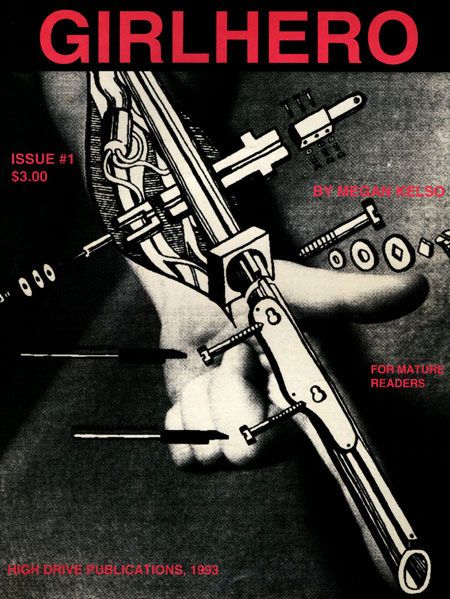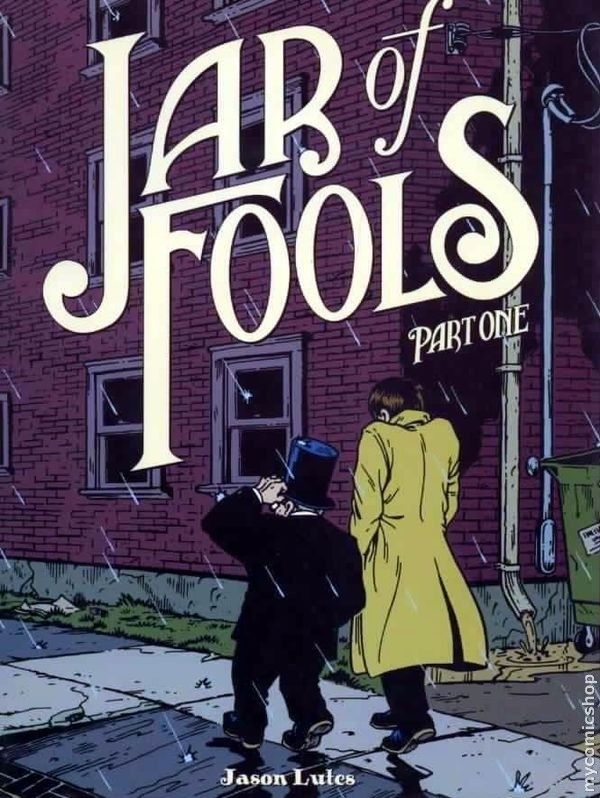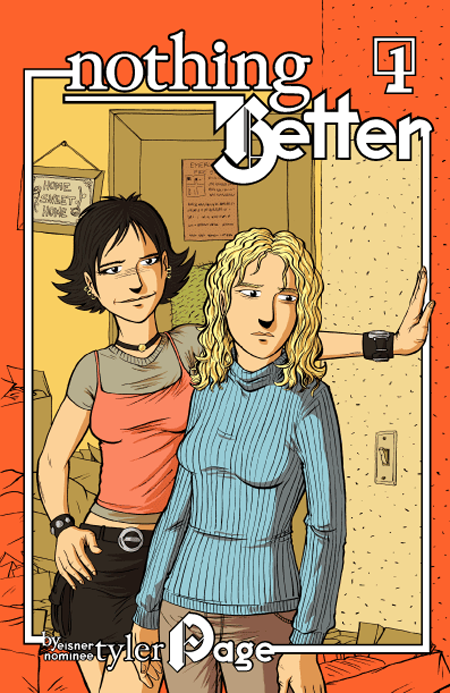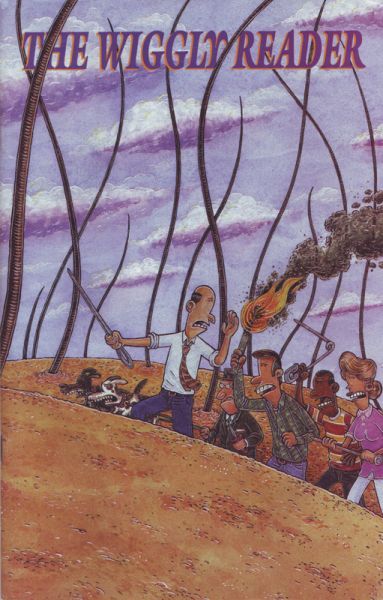Since 1992, the Xeric Foundation, founded by Teenage Mutant Ninja Turtles co-creator Peter Laird, has awarded grants to comic creators that allowed them bring their comics to the world. Late last week Laird announced that the foundation would stop providing grants to amateur creators, noting that "the advent of essentially free web publishing has forever altered the way aspiring comic book creators can get their work out into the public eye." The foundation will instead devote its grant funds to charitable organizations.
The barriers to entry for getting your comic work out in front of people may have changed, but as Sean Kleefeld points out, the Xeric Foundation provided another benefit to comic fans. "...here's why I'll miss the Xerics: they have been an incredibly powerful shorthand for identifying great comics," he wrote on his blog. "Oh, there's other comic awards out there, of course, but those always come across as hit or miss for me. Just because a comic won a Harvey or an Eisner or whatever doesn't mean I'll really enjoy or appreciate it. But the Xerics, I've found, are consistently high quality and enjoyable. I have yet to read a Xeric-winning book that I didn't enjoy, a claim I can't make regarding the Eisners."
So when I threw out the idea to do a Six by 6 list highlighting some of our favorite Xeric Foundation recipients over the years, I didn't realize what I was asking; it didn't register just how many completely awesome creators out there have benefited from the grant. So, when I say "Six Xeric Foundation grant recipients we love," that's not to say that they are the only ones we love. Hell, just throw all the names in a hat and pick out six, and you'll have a list just as legitimate as this one.
Also, it was interesting to see how my fellow bloggers interpreted my request for entries for this list; while some, like Chris Mautner, did what I was expecting and talked about what one of their favorites went on to do after receiving the grant, others reached out to some of them to get their thoughts on the discontinuation of the grants. So the content of the list is ... varied.
As always feel free to share thoughts on some of your favorites in the comments section. You can find a list of all the recipients here.
Jeff Lemire
When I talked to Jeff Lemire back in early 2008, he did not mince words when emphasizing how important his March 2005 Xeric grant had been (for Lost Dogs, which Lemire self- published through his own Ashtray Press imprint):
"It was a huge break. I would never have gotten a book distributed by Diamond without a publisher if it wasn’t for the Xeric Grant, and that helped put me on the map with publishers like Top Shelf. I also learned a huge amount about the business side of the comics industry, which, even though I am not self-publishing any more, still helps me a lot." (Tim O'Shea)
Sam Hiti
Sam Hiti won the Xeric Grant in 2002 and used it to produce his first graphic novel, Tiempos Finales. The book used a combination of influences from Jack Kirby and manga to Christian imagery and Latin artwork that resulted in a unique style and brought Hiti instant acclaim from fans, critics, and professionals alike. I asked him how winning the Xeric affected his career:
"I was saddened to hear this morning that the Xeric Grant will be no more. I received mine in 2002 when I published my first graphic novel Tiempos Finales. Wow. It's almost been ten years. Time flies.
"I remember the work that I put into filling out the forms; the inside scoops I received from Rhode Montijo and Nick Bertozzi (also former winners). Rhode was the one who pushed me to apply last minute and I am so grateful, because I thought I had no chance of winning.
"I remember that someone congratulated me through an email that I had won, so I called up Xeric and they confirmed. I was so ecstatic! Awards like this are good for new creators. It gave me momentum and let me know that somebody other than myself believed that I was capable of doing good work. I wanted to make Xeric proud and show them that their money wasn't going to waste. The pressure was on.
"I reworked the book, adding many pages and a second color. I wanted to bleed every penny that they gave me. My thought was that if this book was my last project, I would go out in a ball of flames. It took what seemed like forever to finish it, I was learning many new things. I was painting houses in those days and I had little bursts of time to work on the book. The Xeric people would check in periodically and ask if I had printed the book yet. I told them I was working on it and not to worry. I hoped that they didn't think that I had already blown the money on toys and candy.
"In the spring of 2004, about a year-and-a-half later, I printed the book at a local mom-and-pop shop with whom I built a great relationship. I'm still using them to this day. I remember holding the final book in my hands as if it was my first child. I remember handing over the complete $5000 to pay for the printing. I remember meeting Peter Laird at the Toronto Comic Con a few months later. His booth was right next to mine and I thanked him and apologized that I reworked the book from what I'd originally sent in. Peter shook my hand and assured me that he was very pleased with the way the book had turned out.
"I am honored to be a Xeric Grant winner, it pushed me to my creative limits and allowed me to be at the right time and place to launch my career. As they say, the rest is history." (Michael May)
Megan Kelso
The central and simple idea behind the Xeric grant was to give budding cartoonists a financial leg up, and it's hard to think of a better example than Megan Kelso. The spring 1993 recipient had been self-publishing her initial, magazine-sized comic Girlhero for about two issues before getting the award, which enabled her not only to publish a more slicker looking product, but also reach a wider array of stores and readers.
Since then she has gone on to become one of the most notable women cartoonists in the alt-comix field, publishing such acclaimed books as The Squirrel Mother, the (recently re-released) Queen of the Black Black and Artichoke Tales. She's had her work published in The New York Times ("Watergate Sue") and won several Ignatz Awards for her work. Would she have stuck with it and had her work as well-received if she hadn't won? Probably. But winning the Xeric surely gave her the self-confidence and enough of a financial windfall to keep her publishing and convince her to turn it into a career. Considering this is still an industry where women cartoonists seem like an anomaly, that's something worth celebrating. (Chris Mautner)
Jason Lutes
Lutes received his grant in 1993 to collect his weekly comic strip, Jar of Fools, which was running in The Stranger, a Seattle alternative newspaper. I remember discovering it in 1995, shortly after moving back to Dallas after living in an outlying suburb. As a life-long reader of comics, I never truly gave up on the medium, but there was a time in the 1990s when I came close. A few books like Sandman and Bone kept me coming back to the shop each week, but it wasn't until I discovered a shop called Einstein's in Garland, Texas that I felt a sense of renewal and excitement about comics and what they could be.
Einstein's was one of those stores that went out of their way to push, promote and carry comics from the back section of Previews -- the stuff from smaller companies who were coming into their own at the time. In fact, they had a money-back guarantee section in their shop; if you didn't like one of the books the store recommended, you could bring it back for a full refund. These shelves had some of the staples I was already enjoying, like the previously mentioned Bone and Sandman, as well as one I had never heard of called Jar of Fools.
In its pages I met Ernie the alcoholic magician, plagued by the death of his brother; his estranged girlfriend Esther; con man Nathan and his daughter Claire; and Ernie's mentor Flosso. It was both depressing and uplifting to see this complex cast struggle through life, emotions and their problems. It was subtle, and ultimately fantastic, and I can remember thinking not only what a great story it was, but how much skill and talent Lutes brought to the storytelling. Thanks to Drawn & Quarterly, the book is still in print, so if you're a fan of Lutes' Berlin or just good stories, check it out. (JK Parkin)
Tyler Page
Tyler Page first came to my attention through Stylish Vittles, his heart-breakingly honest trilogy of graphic novels depicting his relationship with his college girlfriend. I'm a total sucker for realistic college stories and ate it up, so I was also thrilled when Page announced his follow up project, another college series, but this time completely fictional. He launched Nothing Better as a webcomic and in 2007 won the Xeric Grant to publish his first collection. I also talked to Page about what that meant to him:
"I was definitely surprised by the news about the Xeric Grant, as many were. I think it's unfortunate, though I do understand where Peter Laird is coming from. But even with the Internet and things like Kickstarter, I feel like the Xeric still had a place. For me, winning a Xeric was a big deal. I'd heard about it from a colleague back when I was in college and I made it one of my missions to try and win one some day. While I was committed to self-publishing on my own, and racked up an impressive amount of debt doing so, I wouldn't have ever published the first Nothing Better collection if I hadn't won the grant for it.
"Getting the grant did a lot to boost my sense of professional approval and it got me a lot of free press at announcement time as well. And at the time I got it, I was at the end of my financial rope as far as publishing. I couldn't really risk any of my own money any more on publishing; getting the Xeric really helped in that regard. Then again, who's to say that if I hadn't gotten a Xeric and waited a few years until Kickstarter was around, that wouldn't have worked just as well?
"I think the main difference is just the process of having the work judged and the place of honor the Xeric seemed to hold within the comics community. Funding your comic through pre-sales or crowd-sourcing with Kickstarter is fine, but it will never have the caché the Xeric Grant did.
"I'm sure we'll continue to see lots of amazing work from newcomers, but it's still sad to see the Xeric leave the comics world." (Michael May)
John Kerschbaum
For creator John Kerschbaum receiving a September 1996 Xeric Grant (for The Wiggly Reader) literally changed the kind of work that the cartoonist wanted to pursue. As he succinctly put it in a public statement on Google+ "Sad to see this end. I would most likely not be making comics if not for the Xeric grant I received." His statement was reminiscent of something he said in a January 2009 Comics Journal interview--and that Tom Spurgeon picked up on in a March 2009 interview:
"SPURGEON: You once told The Comics Journal that you might not be making comics at all if it weren't for the Xeric grant you received. Why is that? What did the Xeric give you that's continued to pay dividends in terms of your overall artistic output the last 10-12 years?
KERSCHBAUM: What I meant was that prior to submitting to The Xeric Foundation, my goal was to sell gag cartoons to magazines. I wasn't doing comics longer than a page. So writing The Wiggly Reader and getting a Xeric grant turned my attention to longer-form comics, comic books, self-publishing, etc." (Tim O'Shea)



